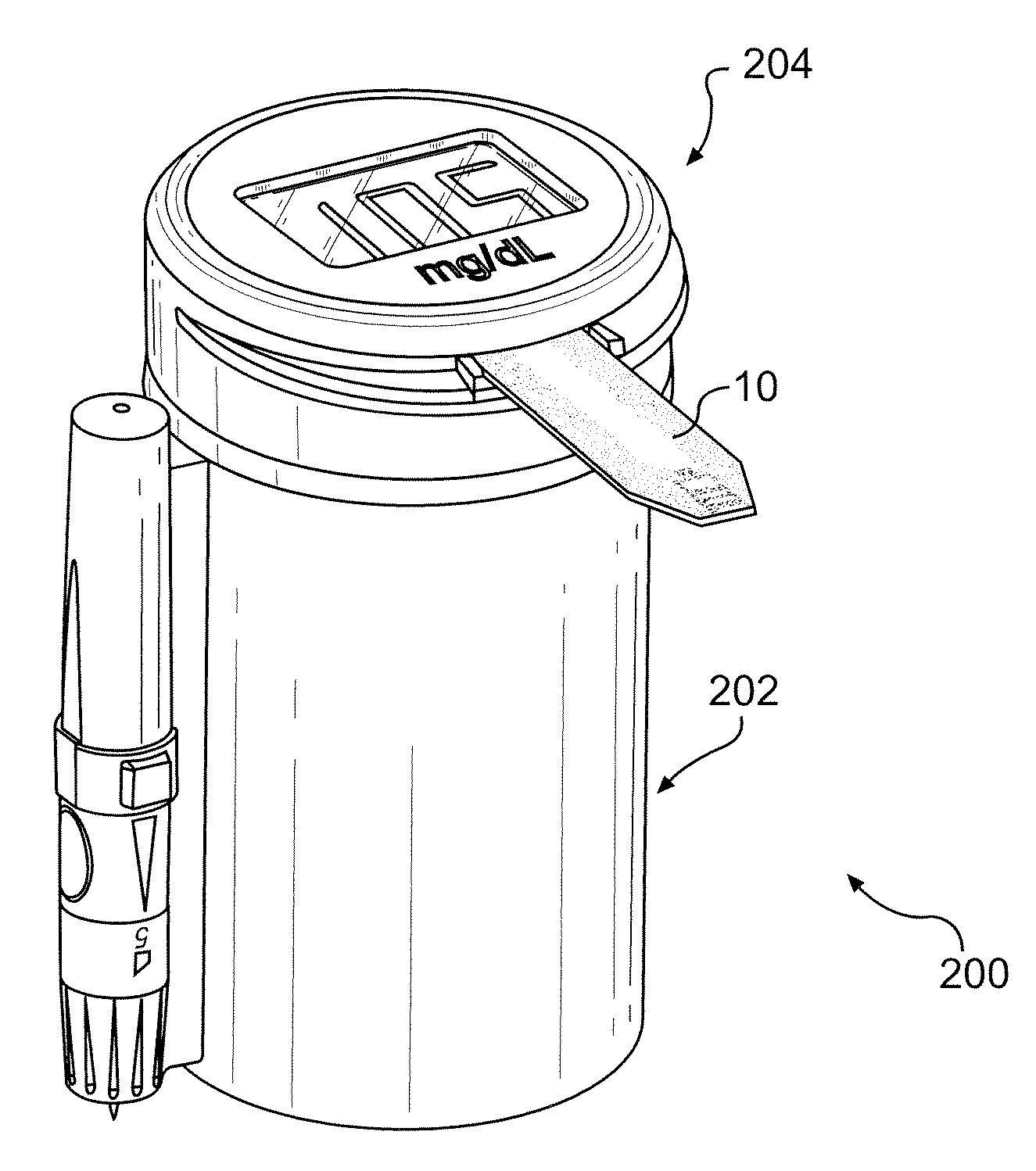Use of Alginate to Reduce Hematocrit Bias in Biosensors
- Summary
- Abstract
- Description
- Claims
- Application Information
AI Technical Summary
Problems solved by technology
Method used
Image
Examples
Embodiment Construction
[0024]Reference will now be made in detail to the exemplary embodiments of the invention, examples of which are illustrated in the accompanying drawings. Wherever possible, the same reference numbers will be used throughout the drawings to refer to the same or like parts.
[0025]A “sample” may include a compositional mixture containing an unknown amount of the analyte (e.g., glucose) of interest. Typically, a sample for electrochemical analysis is in liquid form, and preferably the sample is an aqueous mixture. A sample may be a body sample, such as blood, urine or saliva. A sample may be a derivative of a body sample, such as an extract, a dilution, a filtrate, or a reconstituted precipitate.
[0026]An“alginate polymer” may include alginate, alginic acid, algine, E400, or any polymer with a molecular formula (C6H8O6)n. The alginate polymer may have a molecular mass ranging from about 10,000-600,000. In some cases, alginate may be extracted from the cell walls of brown algae.
[0027]In so...
PUM
| Property | Measurement | Unit |
|---|---|---|
| Pore size | aaaaa | aaaaa |
| Pore size | aaaaa | aaaaa |
| Concentration | aaaaa | aaaaa |
Abstract
Description
Claims
Application Information
 Login to View More
Login to View More - R&D
- Intellectual Property
- Life Sciences
- Materials
- Tech Scout
- Unparalleled Data Quality
- Higher Quality Content
- 60% Fewer Hallucinations
Browse by: Latest US Patents, China's latest patents, Technical Efficacy Thesaurus, Application Domain, Technology Topic, Popular Technical Reports.
© 2025 PatSnap. All rights reserved.Legal|Privacy policy|Modern Slavery Act Transparency Statement|Sitemap|About US| Contact US: help@patsnap.com



